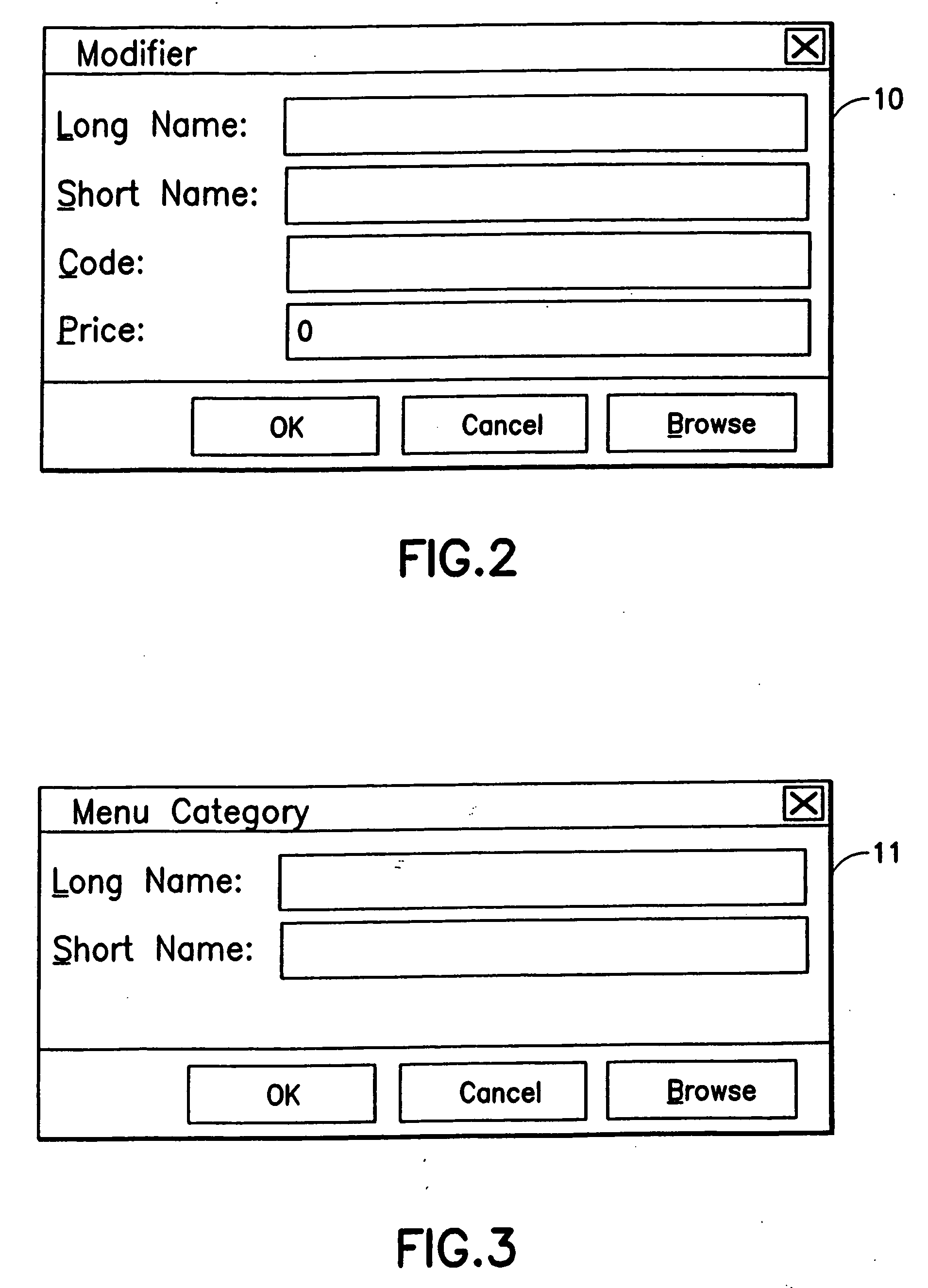Information management and synchronous communications system with menu generation, and handwriting and voice modification of orders
a synchronous communication and information management technology, applied in memory systems, program control, instruments, etc., can solve the problems of compromising the size and clarity of the operator's display medium interface itself, unable to provide user-friendly information management and communication capabilities that do not require extensive computer expertise, and have not yet been used in everyday life. , to achieve the effect of easy tracking and linking specific orders, increasing table turns, and expanding flexibility
- Summary
- Abstract
- Description
- Claims
- Application Information
AI Technical Summary
Benefits of technology
Problems solved by technology
Method used
Image
Examples
Embodiment Construction
[0031] Most personal computers today run under an operating system that provides a graphical user interface (“GUI”) for accessing user applications. A GUI is used in the preferred embodiment of the present invention. Through an interface of windows, pull-down menus, and toolbars, GUI operating systems have simplified PCs and have rendered computer technology more user friendly by eliminating the need to memorize keyboard entry sequences. In addition, GUIs allow users to manipulate their data as they would physical entities. For example, a window can represent a file and the contents of the window can represent the records of the file. The window can be opened, closed, or set aside on a desktop as if it were an actual object. The records of the file can be created, deleted, modified and arranged in a drag-and-drop fashion as if they also were physical objects. The most common GUI operating systems that provide this “object-oriented” environment for personal computers are Microsoft Wi...
PUM
 Login to View More
Login to View More Abstract
Description
Claims
Application Information
 Login to View More
Login to View More - R&D
- Intellectual Property
- Life Sciences
- Materials
- Tech Scout
- Unparalleled Data Quality
- Higher Quality Content
- 60% Fewer Hallucinations
Browse by: Latest US Patents, China's latest patents, Technical Efficacy Thesaurus, Application Domain, Technology Topic, Popular Technical Reports.
© 2025 PatSnap. All rights reserved.Legal|Privacy policy|Modern Slavery Act Transparency Statement|Sitemap|About US| Contact US: help@patsnap.com



